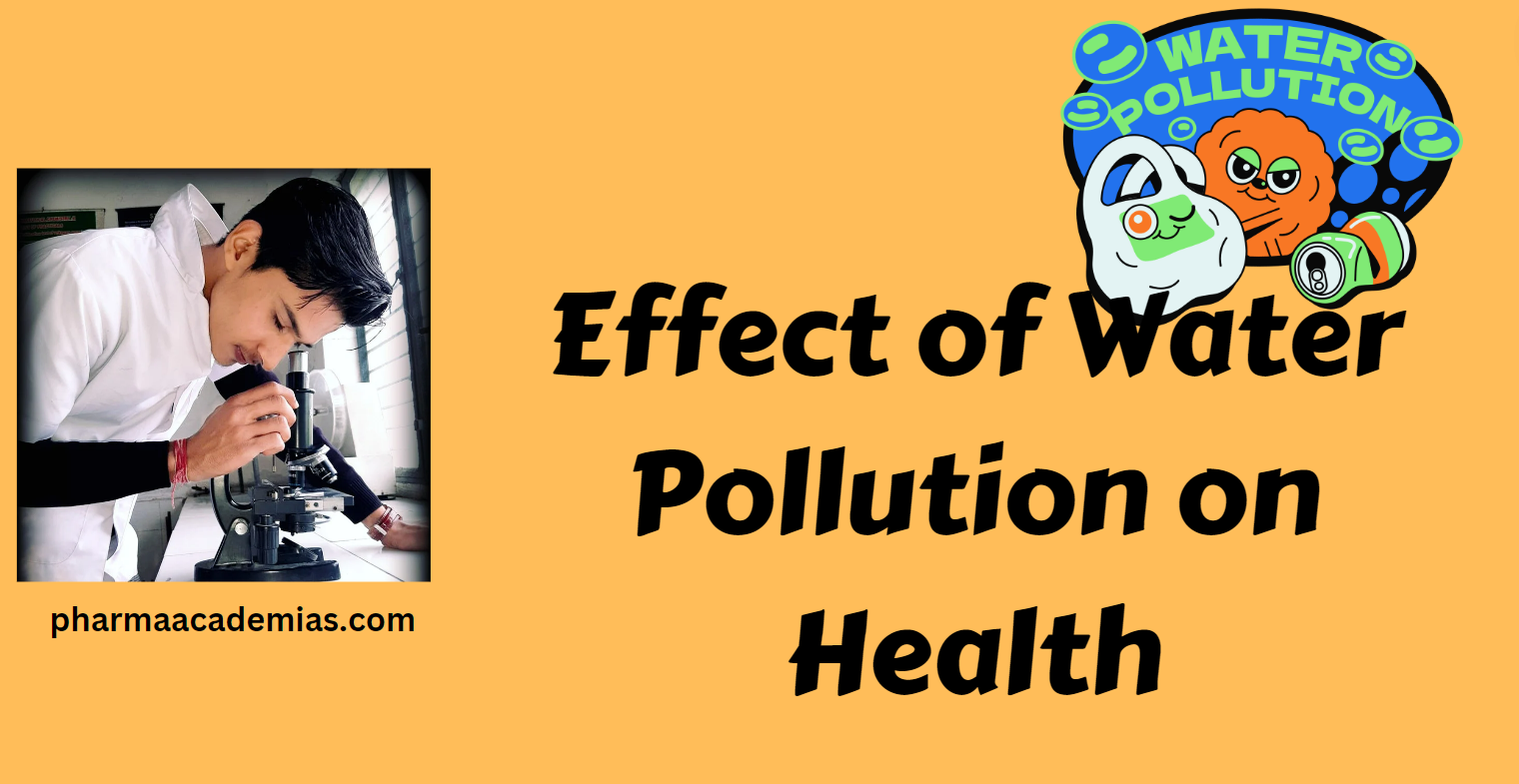Introduction:
Water pollution occurs when contaminants are introduced into water bodies, adversely affecting the environment and human health. The impact of water pollution on health is multifaceted, affecting individuals through contaminated drinking water, exposure to pollutants, and the disruption of aquatic ecosystems. This overview explores the various dimensions of how water pollution can adversely affect human health.
Contaminants in Water
1. Chemical Pollutants:
Examples: Heavy metals (lead, mercury), industrial chemicals, pesticides.
Health Impact: Long-term exposure can lead to neurological, reproductive, and developmental disorders.
2. Microbial Pollutants:
Examples: Bacteria (E. coli), viruses, parasites.
Health Impact: Waterborne diseases like cholera, dysentery, and gastrointestinal infections.
3. Nutrient Pollution:
Source: Excessive discharge of nutrients (nitrogen, phosphorus) from agricultural runoff and wastewater.
Health Impact: Algal blooms, leading to toxins in drinking water and the disruption of aquatic ecosystems.
Health Effects of Water Pollution
1. Waterborne Diseases:
Contaminated water is a major source of diseases like cholera, typhoid, and dysentery, causing diarrhea and dehydration.
2. Gastrointestinal Disorders:
Ingestion of polluted water can lead to nausea, vomiting, abdominal pain, and gastrointestinal distress.
3. Hepatic and Renal Effects:
Exposure to certain chemicals in polluted water can affect the liver and kidneys, leading to organ damage.
4. Respiratory Issues:
Airborne water pollution, such as volatile organic compounds (VOCs), can contribute to respiratory problems.
5. Cancer Risk:
Prolonged exposure to carcinogenic substances in water, like certain industrial chemicals, may increase the risk of cancer.
Preventive Measures
1. Water Treatment:
Implementation of effective water treatment processes to remove contaminants and ensure safe drinking water.
2. Wastewater Management:
Proper disposal and treatment of industrial and domestic wastewater to prevent contamination of water bodies.
3. Regulatory Measures:
Stringent regulations and enforcement to limit the discharge of pollutants into water sources.
4. Public Awareness:
Educational campaigns to raise awareness about the importance of clean water and practices to prevent water pollution.
Importance of Safe Drinking Water
Safe drinking water is fundamental for sustaining life, promoting health, and ensuring overall well-being. Access to clean and uncontaminated water is crucial for various aspects of human existence, and its importance spans across public health, environmental conservation, and socio-economic development.
1. Human Health
1. Prevention of Waterborne Diseases:
Safe drinking water is a primary defense against waterborne diseases such as cholera, typhoid, dysentery, and diarrhea, which can lead to severe illness and even death.
2. Child Health and Development:
Children, particularly infants and young children, are more vulnerable to waterborne diseases. Safe water is essential for their growth, development, and overall well-being.
3. Reduction of Water-Related Illnesses:
Contaminated water can cause a range of health issues, including gastrointestinal disorders, respiratory problems, and skin infections. Safe drinking water minimizes these risks.
2. Environmental Impact
1. Aquatic Ecosystem Preservation:
Safe drinking water practices contribute to the preservation of aquatic ecosystems. Contaminated water can harm aquatic life, disrupting ecosystems and biodiversity.
2. Water Quality Maintenance:
Ensuring safe drinking water also means preserving the quality of water bodies, essential for sustaining plant and animal life and maintaining ecological balance.
3. Socio-Economic Development
1. Improved Productivity and Workforce:
Access to safe drinking water enhances the productivity and well-being of communities. Healthy individuals contribute more effectively to their communities and economies.
2. Reduction in Healthcare Costs:
Preventing waterborne diseases through safe drinking water practices leads to a decrease in healthcare expenditures, both for individuals and governments.
3. Education and Empowerment:
Access to safe water is linked to improved educational outcomes, particularly for girls. It reduces the burden of water collection, allowing more time for education and empowerment.
4. Community and Social Well-being
1. Community Health and Hygiene:
Safe drinking water is foundational for maintaining community health and hygiene practices, reducing disease spread within communities.
2. Social Equality:
Access to safe water is a matter of social justice and equality. It ensures that all individuals, regardless of their socio-economic status, have the right to a basic necessity for life.
5. Global Public Health
1. Disease Prevention on a Global Scale:
Addressing safe drinking water globally is crucial for preventing the spread of waterborne diseases and contributing to global public health initiatives.
2. Humanitarian and Emergency Response:
Safe water is vital to humanitarian efforts during emergencies, disasters, and conflicts. It plays a key role in preventing secondary health crises.
Waterborne diseases
Waterborne diseases are illnesses caused by the consumption of contaminated water. Contaminated water can contain various microorganisms, such as bacteria, viruses, parasites, fungi, and chemical pollutants. When people come into contact with or consume water contaminated with these pathogens, they can develop waterborne diseases. Here are some common waterborne diseases:
1. Cholera: Caused by the bacterium Vibrio cholerae, cholera leads to severe diarrhea and dehydration. It can be fatal if not treated promptly.
2. Typhoid Fever: This bacterial infection, caused by Salmonella typhi, can result in high fever, abdominal pain, and other serious symptoms. It is often spread through contaminated water and food.
3. Dysentery: Dysentery is an inflammatory disorder of the intestine, typically resulting in severe diarrhea with the presence of blood and mucus. Various bacteria, such as Shigella species can cause it.
4. Giardiasis: Giardia lamblia is a parasite that causes giardiasis. This waterborne disease leads to gastrointestinal symptoms such as diarrhea, abdominal cramps, and bloating.
5. Cryptosporidiosis: This is a diarrheal disease caused by the microscopic parasite Cryptosporidium. It can be contracted by ingesting contaminated water or food.
6. Hepatitis A: Hepatitis A is a viral infection affecting the liver and is often spread by consuming contaminated water or food. It can cause symptoms such as jaundice, fatigue, and nausea.
7. Amoebiasis: Entamoeba histolytica is a protozoan parasite that can cause amoebiasis, leading to symptoms like dysentery and liver abscesses.
Preventing waterborne diseases involves ensuring access to clean and safe water sources, proper sanitation practices, and promoting hygiene. Water treatment methods, such as filtration, chlorination, and boiling, can help eliminate or reduce the presence of pathogens in water. Public health measures, such as regular water quality monitoring and proper sewage disposal, are also crucial in preventing the spread of waterborne diseases.

